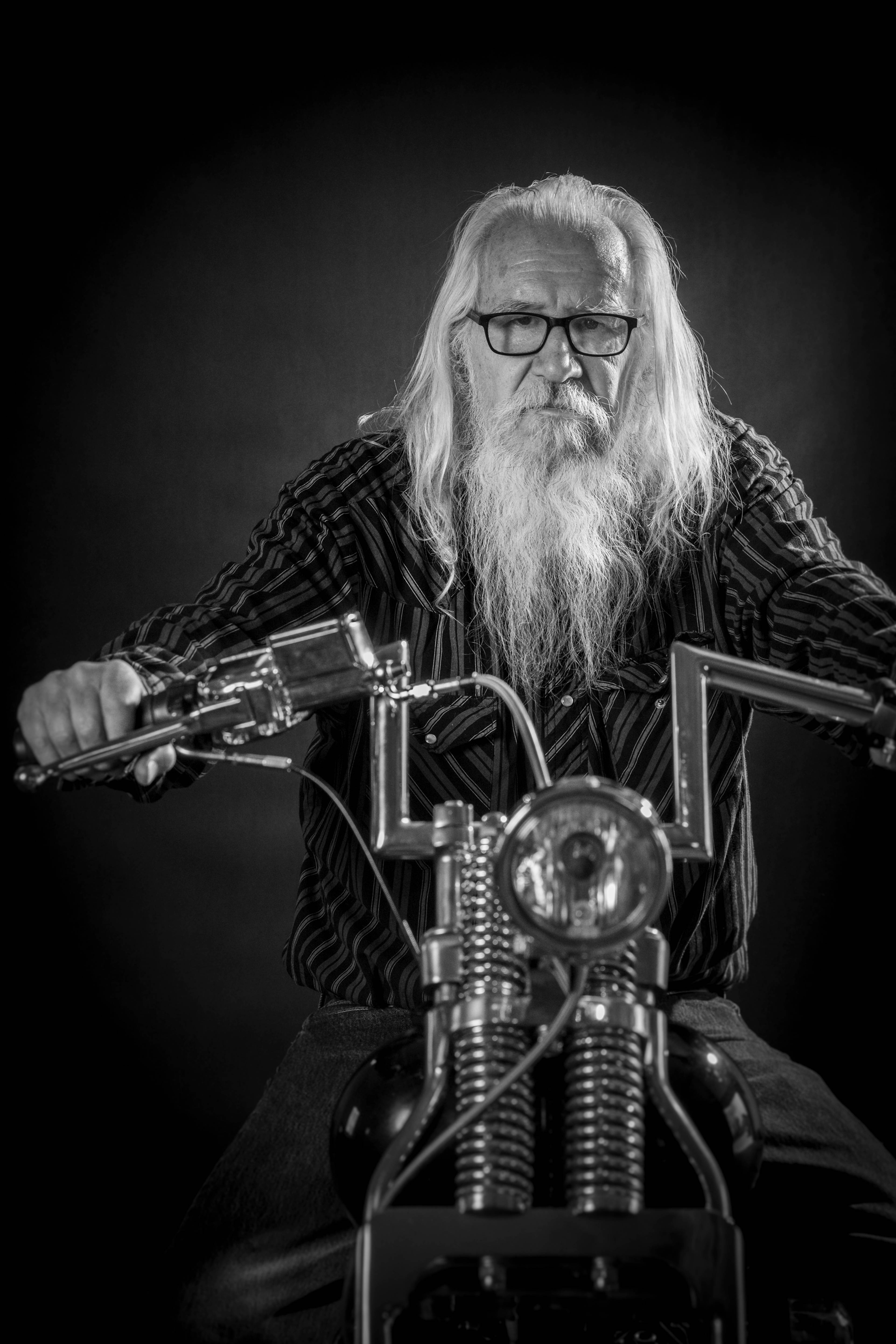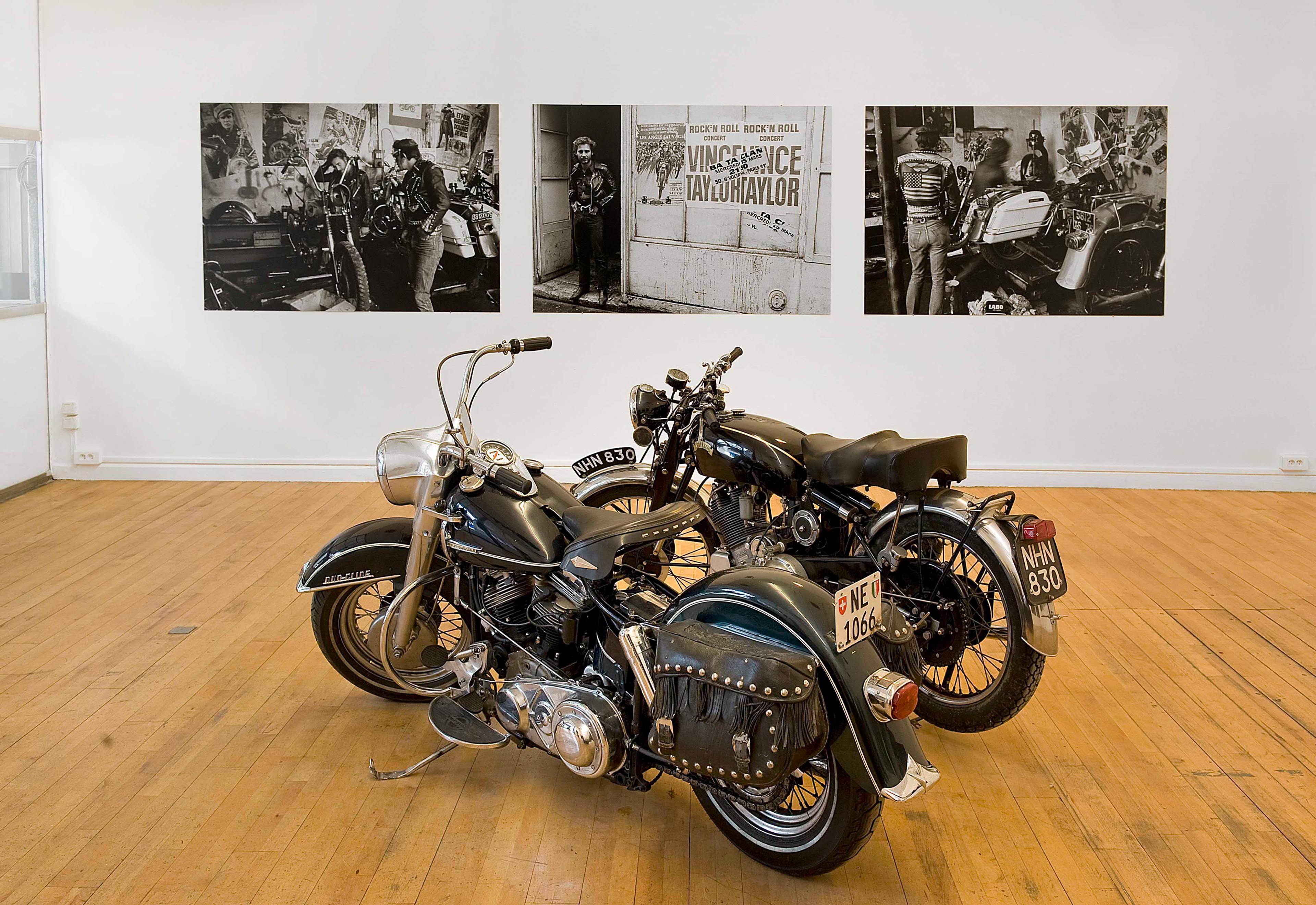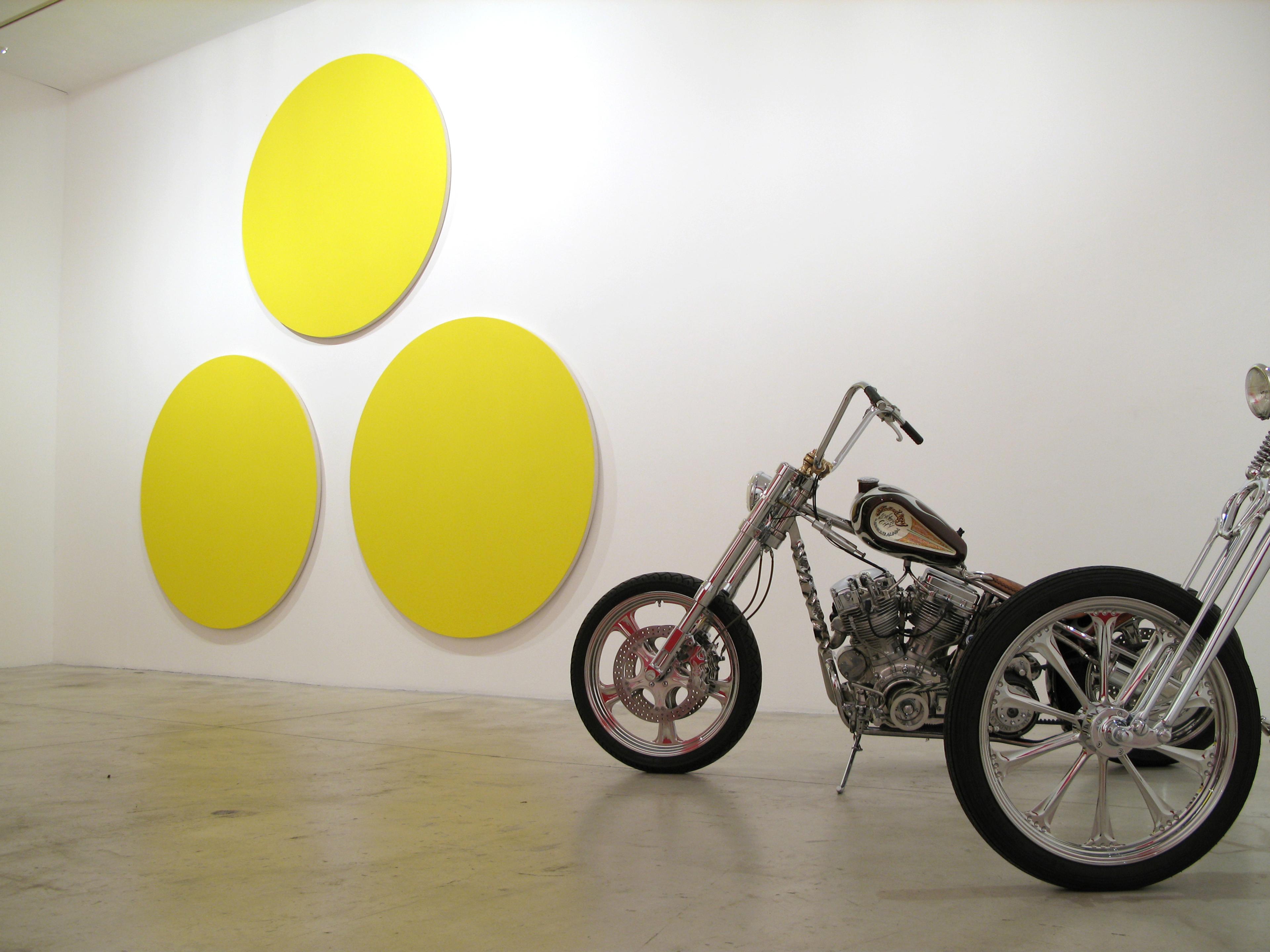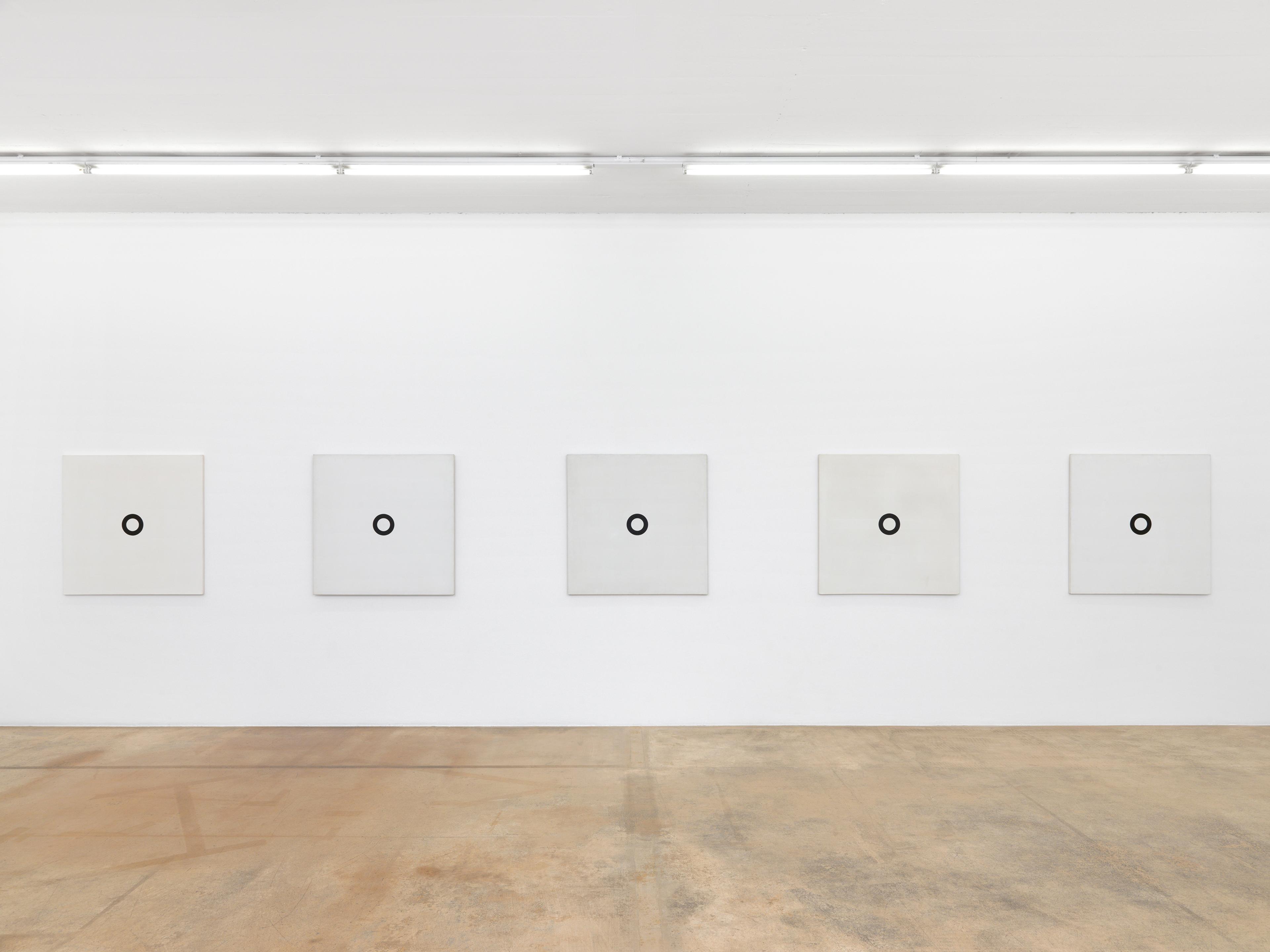In a solo show at MASSIMODECARLO, Paris, last winter, the deconstructive Swiss painter Olivier Mosset (*1944) presented TBT (2023), a color-shifting painting on aluminum panel reminiscent of a motorcycle gas tank. Roughly two meters by two meters square, the exhibition’s lone work was hung at a forty-five-degree angle to the central wall’s horizontal axis, squarely out of joint with the straight lines of the surrounding space. Whether or not Mosset himself would agree, TBT is a convenient cypher for the spirit of dissent, of dis-alignment from the system, he has enacted since the 1960s in his stringently Minimalist oeuvre – as well as in his passion for Harleys. The following conversation, initiated by a young artist who coincidentally found Mosset’s contact in an un-scrubbed email thread, hearkens back to the peak of post-war modernism in the US and Europe and the difficulties of an era when it’s not clear what to rebel against.
Francesco João: I’d like to start by talking about your motorcycles. When did you buy your first one?
Olivier Mosset: My first was a 1945 Flathead Harley Davidson750 cc that I bought in Paris in early 1970.
FJ: How many do you have?
OM: I basically have one motorcycle here (in Arizona), a Pan/Shovel “Special Construction.” There is a customized Shovel at a dealer in New York which is technically mine, plus a Pan in New York that’s sold, but which still needs to be paid for.
Foreground: Two Motorcycles (Vincent, 1950 & Harley Davidson 1962), from the collection of Olivier Mosset; background: Alain Dister, Rue de Lappe, 1972. Installation view, MAGASIN - Centre National d'Art Contemporain de Grenoble, 2009. © Magasin. Photo: Blaise Adilon
FJ: I read that you founded a biker gang in your twenties in Paris. Harleys don’t seem very maneuverable on European roads, but then again, neither are sculptures or paintings, and yet all of these can be “revolutionary instruments.” Do you agree?
OM: You don’t found a club – these things just happen (or happened). Paintings, sculptures, and motorcycles as revolutionary instruments? I don't know. But, all these things happened at a specific time, under certain circumstances, and may reflect the contradictions in the organization of society at that time, which may make them an instrument of change. But, of course, a revolution is not a dinner party.
FJ: How important is customization to you? Is it something about Harley culture generally, or does it have a personal meaning?
OM: Harleys are part of the myths that make up the cultures where I’ve lived, and customization is part of these myths. If it’s a question of taste, it’s also just something that makes sense. The readymade things, as cool as they might be, are not what we were after.
In the end, it might just be a question of taste. And, of course, taste doesn’t fall from the sky.
FJ: In the 70s, the Harley brand was strong not only in the US, but also in Europe; more than thirty years later, that myth has undoubtedly evolved, in no small part thanks to your own efforts. I’m thinking, for example, about the exhibition invitations where your motorcycles were portrayed in front of galleries (Laboratorio, Milan, 1977; Centre d’Art Contemporain, Geneva, 1986; Galerie Art & Public, Geneva, 1994), or about the documentary Downtown 81 (2000), where you gave a ride to the musician Arto Lindsay.
The first motorcycle you exhibited was a custom by (the motorcycle builder) Indian Larry in the early 2000s, more than thirty years after you bought your first Harley. How did you realize that a motorcycle could be exhibited like a painting?
OM: Yes, we did this show at Spencer Brownstone, New York in 2007 after Larry passed, though we had spoken about it before. At the same time, I also customized a motorcycle that we showed in Switzerland and sold later at the Parisian art fair FIAC (without registration).
Of course, I knew that anything can be shown as art, so long as people are interested, starting with a bottle rack [editor’s note: referring to Marcel Duchamp’s 1914 readymade], but also cars, horses, and blank canvasses. In my case, showing motorcycles was maybe a selfish thing. But the works of Indian Larry had such a quality that it was obvious that they could be shown in a New York gallery next to paintings.
To be honest, I am still a little nostalgic about the 20th century, not only because of that motorcycle thing, but also because of the art of that time.
Views of “Olivier Mosset / Indian Larry,” Spencer Brownstone Gallery, New York, 2007. Courtesy: Spencer Brownstone Gallery
FJ: What do you miss about it?
OM: Well, I don’t know, but I have the feeling that, back then, I could figure out what the dialectics of the art world were. Now, I can’t. The fact that anything is possible isn’t bad, but in this new situation, I’m kind of lost. I still like abstraction (or Minimal art), which is still possible, but it became just a certain taste, not much more. Or, maybe it is only the fact that I’m getting old and vaguely disenchanted.
FJ: I think your disenchantment is more widespread than we generally admit. Perhaps it’s because, gradually, people started to talk a lot about artists themselves, but very little about their art. It’s become about stories to tell and works that represent those stories in an easily understood way, rather than being what they are.
OM: I would agree with you. But, as I said, I still feel that I don’t understand the 21st century too well, which means that, sometimes, I don’t really know what to say.
Olivier Mosset, Patricia's Pillow, 1985, acrylic on canvas, 300 × 600 cm. Courtesy: the artist and MASSIMODECARLO. Photo: Alessandro Zambianchi
Views of “Olivier Mosset,” MAMCO, Musée d’art moderne et contemporain, Geneva, 2020. Courtesy: MAMCO. Photos: Annik Wetter
FJ: Who, if anyone, have been your heroes, both in art and beyond it?
OM: Things don’t fall from the sky. I got interested in art after seeing an exhibition at the Kunsthalle Bern of Robert Rauschenberg, Jasper Johns, Alfred Leslie, and Richard Stankiewicz (“Four Americans,” 1962). I was impressed by a Mondrian, which, among Renoir and Bonnard, looked modern, and, for some reasons, got interested in American Ab-Ex and the Russian avant-garde. Just like everybody else, I could add Giotto, Venice, Florence, and Rome. I have some friends that I respect, but I am not going to name them.
FJ: Do today’s “many contradictions in the organization of society” suggest to you that we are failing, even that we have failed?
OM: I don’t want to get into that. To quote Bob Dylan: “If my thought-dreams could be seen / They’d probably put my head in a guillotine” I went through that 1968 thing: People don’t really want change, they just want better living conditions. I also went through the so-called end of modernism. What can I say? In the end, it might just be a question of taste. And, of course, taste also doesn’t fall from the sky.
FJ: Is there something else you would have liked to say?
OM: Things I would have liked to say? I feel that I am not so good at saying things. Maybe that’s why I tried to paint, even if the solution rests somewhere else.
___









